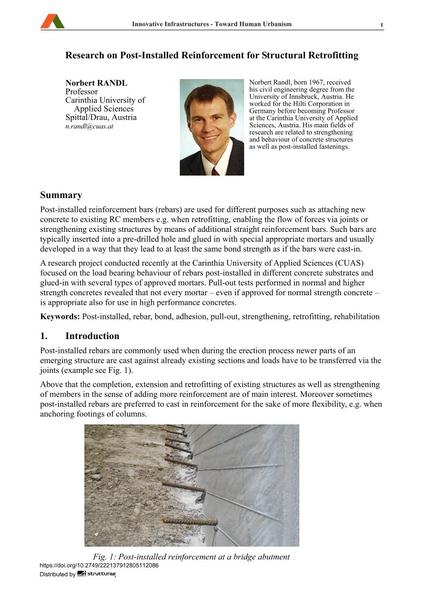Research on Post-Installed Reinforcement for Structural Retrofitting

|
|
|||||||||||
Détails bibliographiques
| Auteur(s): |
Norbert Randl
|
||||
|---|---|---|---|---|---|
| Médium: | papier de conférence | ||||
| Langue(s): | anglais | ||||
| Conférence: | 18th IABSE Congress: Innovative Infrastructures – Towards Human Urbanism, Seoul, Korea, 19-21 September 2012 | ||||
| Publié dans: | IABSE Congress Seoul 2012 | ||||
|
|||||
| Page(s): | 1508-1513 | ||||
| Nombre total de pages (du PDF): | 6 | ||||
| DOI: | 10.2749/222137912805112086 | ||||
| Abstrait: |
Post-installed reinforcement bars (rebars) are used for different purposes such as attaching new concrete to existing RC members e.g. when retrofitting, enabling the flow of forces via joints or strengthening existing structures by means of additional straight reinforcement bars. Such bars are typically inserted into a pre-drilled hole and glued in with special appropriate mortars and usually developed in a way that they lead to at least the same bond strength as if the bars were cast-in. A research project conducted recently at the Carinthia University of Applied Sciences (CUAS) focused on the load bearing behaviour of rebars post-installed in different concrete substrates and glued-in with several types of approved mortars. Pull-out tests performed in normal and higher strength concretes revealed that not every mortar – even if approved for normal strength concrete – is appropriate also for use in high performance concretes. |
||||
| Mots-clé: |
renforcement
|
||||
